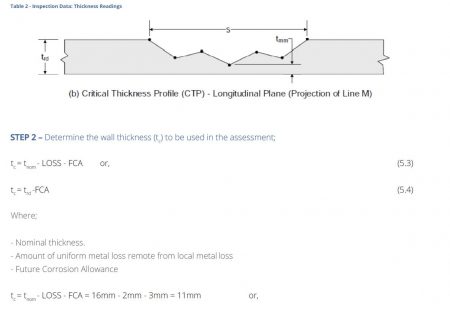- Home
- About
- Training Courses
- ASME Classroom & Virtual Courses
- API Classroom Courses
- E-Learning
- ASME Level 1 eLearning - Full Course
- ASME Plant Inspector Level 1 – Block 1 (Intro and Modules 1 and 2)
- ASME Plant Inspector Level 1 – Block 2 (Modules 3-5)
- ASME Plant Inspector Level 1 – Block 3 (Modules 6-8)
- ASME Plant Inspector Level 1 – Final Examination Module
- ASME Level 2 eLearning - Full Course
- ASME Plant Inspector Level 2 – Block 1 (Modules 1-3)
- ASME Plant Inspector Level 2 – Block 2 (Modules 4-7)
- ASME Plant Inspector Level 2 – Block 3 (Modules 8-10)
- ASME Plant Inspector Level 2 – Final Examination
- API 579 Fitness For Service
- API 571 Corrosion and Materials
- API 577 Welding & Metallurgy
- API 580 Risk Based Inspection
- API 510 CPD Training
- API 570 CPD Training
- API SIFE
- API 1169 Pipeline Inspector Certification Course
- API 936 Refractory Personnel Certification
- Technical Courses
- API CPD Recertification
- Training Courses
- Technical Hub
- Virtual Training
- FAQs
- Contact
- Online Training Portal
- Shop
- Privacy Policy

- In: Training | On: Nov 18, 2021
Fitness For Service – Local Metal Loss Level 1 Assessment
Fitness For Service – Local Metal Loss Level 1 Assessment.
Part 3 of our 3 part series takes a look at the assessment of local metal loss. As we discussed in Part 1, there is strictly no definition of what constitutes local metal loss compared to general, so the accepted rule of thumb is to start with a Part 4 assessment initially as it is more conservative. There are times of course where the loss is evidently local and there is no reason why you should not begin with a Part 5 assessment in the first place.
This assessment can be used for Type A components for internal pressure loadings (note the difference to a Part 4 assessment where external pressure is also permitted). The procedure below is developed for components where a MAWP can be determined based on the Remaining Strength Factor (RSF). The RSF in simplistic terms is a ratio of the load that the damaged component would burst at, divided by the load the very same component in the undamaged condition would burst at.
As always, it is best to have a copy of 579 to follow through this worked example. We begin at clause 5.4.2.
Example 1:
A region of local metal loss has been found on the inside surface of a spherical pressure vessel during an inspection. The vessel and inspection data are shown below. The vessel was constructed to the ASME B&PV Code, Section VIII, Division 1, 1989 Edition. Determine if the vessel is acceptable for continued operation.

The data in Step 1 provides the critical inspection planes, Figure 1, and the thickness readings recorded, table 1. This would be an on-site activity required to establish the CTP in accordance with the guidance provided in Part 4 paragraph 4.3.3.3.
STEP – Determine S and C from the CTP








And there we have it. This completes our 3 part overview of level 1 metal loss assessments. A word of caution though, there is much more to consider than following the steps by step guide. There are many limitations and caveats that present themselves prior to conducting the assessment. If you want to find out more, why not attend one of our practical Fitness For Service training courses, where we go into far more detail and technical concepts than these quick guides.


